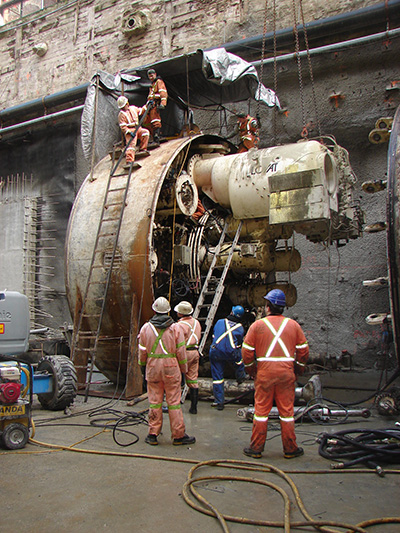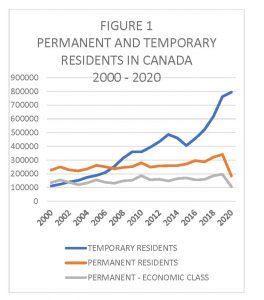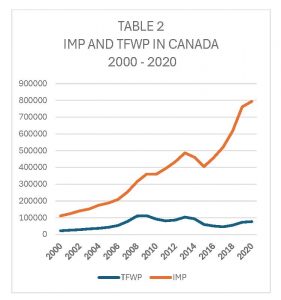Prime Minister Justin Trudeau’s Liberal government is resuscitating a 2015 election promise to scale back the Temporary Foreign Worker Program (TFWP) and fill labour shortages with Canadians, using permanent immigration.
The Liberals are introducing measures to cut the importation of migrant workers and reduce employer abuse of the program.
As the Liberal cabinet launches this policy shift, a United Nations (UN) report was released that describes the TFWP as a breeding ground for modern slavery.

The TFWP issues employer-specific work permits, which creates a dependency between workers and employers. As an institution, the TFWP has an asymmetrical power structure, which favours employers and violates the rights of workers. The UN defines this relationship as indentured servitude or modern slavery.
The TFWP and the International Mobility Program (IMP) are the legal framework used to regulate migrant workers in the labour force. However, public debate on immigration policy ignores the IMP. In addition, it fails to discuss the impact of these programs on major industrial sectors, including construction.
In response to this gap, I was hired by the Labourers’ International Union of North America (LiUNA) in 2021/2022 to write a report entitled The Political Economy of the TFWP and the IMP in Canada: Modern Slavery, Construction Cycles and National Output (2000 – 2020).
For almost two decades (Figure 1), federal government policy has encouraged employers to import more temporary residents than permanent residents, including the economic class. The stagnation and decline of permanent immigration are related to the rapid growth of temporary residents. This immigration policy began slowly with the Liberal governments of Jean Chretien (1993 to 2003) and Paul Martin (2003 to 2006).

The number of temporary residents increased at exponential rates, under Stephen Harper’s Conservative government (2006 to 2015). Prior to the 2015 federal election, the Liberal opposition said the rapid growth of the TFWP represented the failure of the Conservative government. After winning the election, the Liberal government (2015 to 2024) defended and adopted the Conservative’s immigration policy.
Initially, the IMP was one stream under the TFWP. The role of the TFWP in the economy was to fill short-term labour shortages in strategic business sectors, when employers can’t find citizens and permanent residents. Conservative policy reforms in 2014 split the TFWP into two separate programs. The reforms were supposed to stop employers from operating business models that are heavily dependent on the TFWP.
The new Statistics Canada categories show the IMP imported a much larger number of migrant workers than the TFWP, between 2000 and 2020. The IMP has also expanded at a much faster rate than the TFWP (Figure 2).

The Conservatives’ policy reforms in 2014 were used to crack down on the TFWP, while continuing to expand the little-known IMP.
The IMP issues open permits, which means workers are not tied to an employer and can be hired in any industry. The TFWP issues employer-specific work permits to workers, after employers provide evidence of a labour shortage. Employers can use the IMP to avoid the labour shortage test required by the TFWP.
Modern slavery is defined as employer exploitation of migrant workers, who are paid less than citizens and permanent residents, for a longer and more intense workday.
Liberal and Conservative policy established the migrant labour force as a structural feature of the national economy. The IMP and TFWP have made it easier for contractors to profit from the unpaid labour of migrant workers on major construction projects.
The LiUNA study uses five real-life case studies to provide evidence of modern slavery in the Canadian construction industry.
The Canadian police made their first successful criminal prosecution in a case of modern slavery, after a 10-month RCMP investigation into the exploitation of 23 Hungarian migrant workers, at various construction sites in Hamilton, Ont. from 2008 to 2010.
LiUNA and the B.C. Building Trades launched a series of legal actions, which exposed modern slavery by employers and labour brokers at three B.C. construction projects: the Canada Line light rapid transit project (2005 to 2009); the Golden Ears Bridge project (2006 to 2009); and the Murray River mine project (2012 to 2015). In Alberta, migrant workers were victims of fraud and wage theft at the Horizons Oil Sands project (2007). This crime was exposed when two migrant workers were killed.
Richard Gilbert is an associate economist at a consulting firm in Vancouver, which provides statistical analysis and specialized support to the legal profession in Western Canada. Richard uses his experience as a journalist and economist to work as an independent consultant, who offers services as a freelance writer, economist and political analyst. Send Industry Perspectives Op-Ed comments and column ideas to editor@dailycommercialnews.com.




Recent Comments
comments for this post are closed